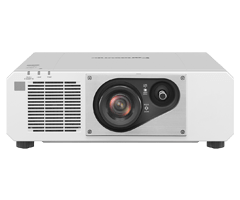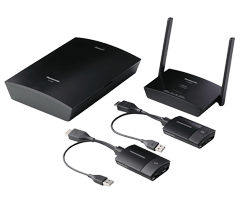
Changing Your Leaning Style
withLearning Commons
Learning Commons is a new form of learning space in schools that began at a university library. Unlike traditional libraries where the school simply provides a learning space, Learning Commons provide individual tutoring and skill development programs by teachers and full-time staff members and support the promotion of collaborations between students. We will be explaining this space, which may significantly change the future of school education around the world, in detail.
What Are Learning Commons?
Commons is a word that means "shared resources" and "public places", and Learning Commons, which were developed in the wake of the Internet revolution during the 1990s, refer to learning spaces that enable self-learning and group learning to be flexibly and actively conducted by students in university libraries and their surrounding facilities. Learning Commons are comprised of a computer lab, group work area, individual work area, café and lounge area, and are being gradually introduced in universities throughout North America and the rest of the world as a 21st century-style library.
History and Development of Learning Commons
Information Commons, which are said to be the predecessor of Learning Commons, were originally developed in universities in North America as a place to share information resources in the digital age since the spread of the Internet between the mid-1980s to the 1990s. The Information Arcade at the University of Iowa (1992) and the Information Commons at the University of Southern California (1994) can be listed as early introduction examples. Specifically, PCs are installed in the Information Commons, where electronic information resources, websites, software and educational materials provided at the library can be used.
Furthermore, this system was developed, and the Learning Commons was created as a space to effectively support self-learning by placing IT equipment and staff members instead of simply searching for information.
Learning Commons are continuing to change by corresponding to the evolution of technology and flow of university reform. Among them, Learning Commons are not only operated only in university libraries, but they have been developed as facilities that support university education and the number of cases where they are operated by full-time staff members and teachers in separate buildings on campus is increasing.
Role of Learning Commons
What Learning Commons should provide to students and scholars are more diverse services. With the evolution of digital technology and learning methods, the educational needs of individual students are also diversifying. To meet these needs, the number of schools that are building a new facility dedicated to Learning Commons is increasing.
Providing a Wide Range of Services to Students and Users

Thanks to Learning Commons, a wide range of services can be provided to students and users at university libraries. The latest technologies and services can be prepared in a more integrated environment while maintaining traditional reference and research elements.
Universities must prepare the necessary equipment and environment and provide physical support to support active learning of students and users.
Why Use Learning Commons?

Today’s “digital native” students who were raised with mobile devices since childhood are very skilled at mastering digital devices. However, it is necessary to provide new guidance regarding the information literacy to collect, evaluate, organize and appropriately express and send the information you need from various information that can be accessed through a computer. By having Learning Commons, which offer the use of ICT tools and concierge support, take on the role as a place for autonomous learning to take a closer look at the abundant collection of books and electronic information, they can greatly enhance the educational effects of students.
Learning experiences through Learning Commons are expected to activate students' inquisitiveness, imagination and creativity and become a catalyst for growth as a scholar and as a person.
Role of Evolving University Libraries
The role of university libraries is to support education, learning activities and academic research activities for students.
Furthermore, the importance of inquiry-based learning that students learn by themselves has been recognized in recent years, and providing that support is being required at university libraries. Learning Commons are also expected as a place for this support.
As mentioned earlier, in order for students to effectively utilize the Learning Commons, information literacy education is essential to improve your skills to search analyze and disseminate necessary information. University libraries are required to be actively involved in this education.
Learning Commons that Promote Inquiry-Based Learning
Inquiry-based learning is a learning activity that enables students to set their own assignments, collect, organize and classify information towards solving them and proceed while exchanging opinions and collaborating face-to-face with the people around them. By doing so, it is intended to increase the thinking ability, judgment and expressiveness of the students.
Learning Commons, which are designed to be used by a group or an individual and can connect to the Internet and campus network at any time, are places for learning that are suitable for these activities.
Now we will be introducing points to create this kind of space.

Creating a Physical Space for the Learning Commons
Normally, furnishings and equipment that are comfortable for both individuals and groups are placed in the Learning Commons. Furthermore, furniture that can change the environment according to needs such as the number of users and learning content, access to high-speed and high-capacity wireless networks and power outlets, displays and projectors for presentations and tutors who can support the students are arranged there.
Also, there are examples where a café space was set up for students to maintain good health by enjoying simple meals or take a break.
Impact of COVID-19 on Learning Commons
Due to the impact of the COVID-19 that began spreading in the beginning of 2020, universities of each countries are taking various measures to prevent the spread of infections on campus. There are some universities that have adopted online lessons and face-to-face lessons depending on the infection situation.
In the Learning Commons, there are many points that must be considered, such as ensuring the proper distance between seats, installing acrylic partitions and disinfecting shared equipment.
Design of Learning Commons
Learning Commons are spaces for students that have been designed to support diverse learning activities and promote both individual learning and group learning in a silent environment.
In order to support the diverse needs of the students, flexible planning is required to create a space where students can talk, learn and acquire new knowledge while utilizing the latest technologies.

Creating a Learning Environment
Lighting
In addition to securing the necessary and sufficient amount of light, a relaxed environment can be created by letting in natural light indoors. However, if the sunlight is too strong, it can make it difficult to see screens such as PCs and conference monitors, so equipment that can respond to seasonal factors such as blinds is required.

Soundproofing
For Learning Commons where group learning is expected to be conducted indoors, there is no need to pursue the quietness of a library.
However, planning that balances comfort with reduced external noise and usability for students is required to enable stress-free learning activities to be conducted.
AV equipment
Display

There are cases where displays are installed in the shared spaces in order to Encourage/support discussions to go smoothly between students at the Learning Commons. What you have to be careful about at this time is taking measures to prevent outside light or the ceiling lighting from being reflected on the screen and becoming difficult to see. By using displays that can eliminate these issues by supporting external light and reflection, the screens will become easier to see.
With Learning Commons, there are cases where a whiteboard is installed and ideas and discussion notes are shared among members but the displays can also play that role. With a touchscreen display, you can flexibly display content output from a PC while marking the key areas above it or writing onto the whiteboard. It is also possible to send the content to people in distant locations. In this paperless age, participants can write onto the board and hold smooth and effective discussions with a large screen.
Projector


In spaces to give presentations of research results, etc., a projector that can display a larger screen is required. At the Learning Commons, which are free learning spaces, there are situations where projectors are installed in various places, and it is not always possible to ensure a wide distance from the screen. It is necessary to select a device that can project beautifully even under such conditions. In addition, the screens may be difficult to see due to the reflections of the ceiling lighting and outside light, so these issues must be dealt with. By using a high-brightness model, the screen will be easier to see, and it will eliminate the hassle of closing curtains and blinds every time you use it.
Power Outlets, Wiring and Wi-Fi Environment
It is important to make an arrangement plan for the power outlet placements and LAN ports depending on the number of students and staff that will use it, the type of digital devices and their usage methods. Also, the connectivity between each student's PC and the AV equipment that displays them is equally important. When using a wired connection, you may need to reconnect the PC and AV equipment each time the presenter changes or move closer to the equipment, but with a wireless connection, you can proceed efficiently without any hassle.
An Interior Plan that Requires Flexibility Is Necessary
Unlike libraries, where just a quiet environment is required, Learning Commons serve as a stage for various learning styles. Therefore, it is important to make plans after the process of creating a concept after clarifying the role of each space and room. There are many points to consider, such as whether only students will use the space, whether people from the local community will use it and what kind of learning space you wish to create.
A Quiet Space for Self-studying
At the Learning Commons, a space for self-studying is required in addition to a space for group learning. It is necessary to ensure a quiet environment that can be easily used by one person.
Social Space
The social space is an area where students, faculty members and off-campus personnel can share, meet and learn from each other.
Tables that can be used for group work and be moved if necessary and displays and whiteboards that can be connected to digital devices are useful for sharing ideas.
Makerspace (Creative Space)
The makerspace is a laboratory-like space equipped with tools such as 3D printers, laser cutters and machine tools that are required for students who wish to create things and study as a group.
The space enables students to create new ideas with friends, teachers and mentors in an open area instead of being confined in a laboratory.
ADA Compatible
At universities where people with and without disabilities learn together, it is necessary to be careful not to hinder anyone when designing the space and selecting equipment. In the United States, the law is stipulated as the ADA (Americans with Disabilities Act), which requires spaces and equipment to be accessible or available to people with disabilities. For example, when installing a display, it is necessary to consider reducing the depth so that it does not interfere with the passage of people with disabilities. Some manufacturers offer metal fittings, etc. that enable a large display to be installed with reduced depth.
Creating New Ideas by Changing Learning Styles
While new learning styles such as remote classes from home are becoming a trend, students may become isolated, and their communication skills and academic ability may decline. Learning Commons enable you to improve your social skills in addition to reading books and materials alone and conducting research, including communicating with friends or educators, giving presentations in front of multiple people or using the space as a gallery to announce deliverables. Learning Commons are spaces where people can encounter other people and information and connecting with them to deepen your learning.
By changing learning styles in universities through this space, we hope that it will lead to the creation of more remarkable innovations in the near future.









